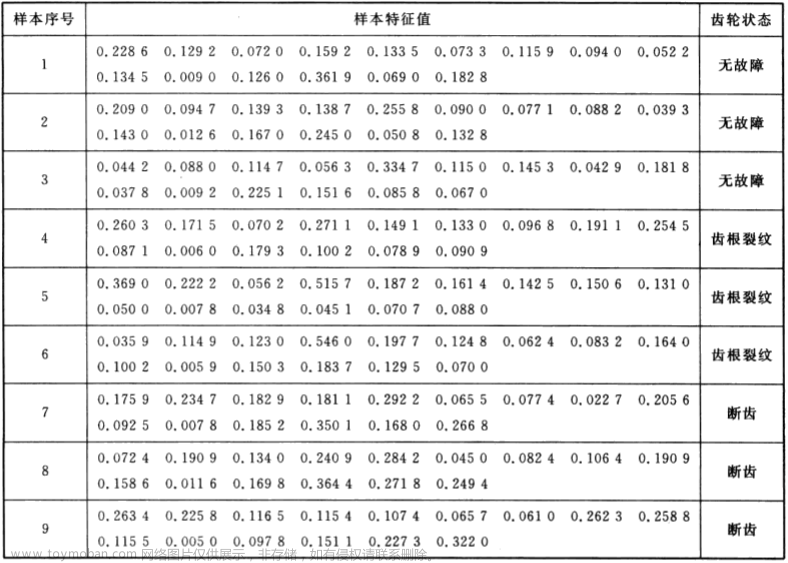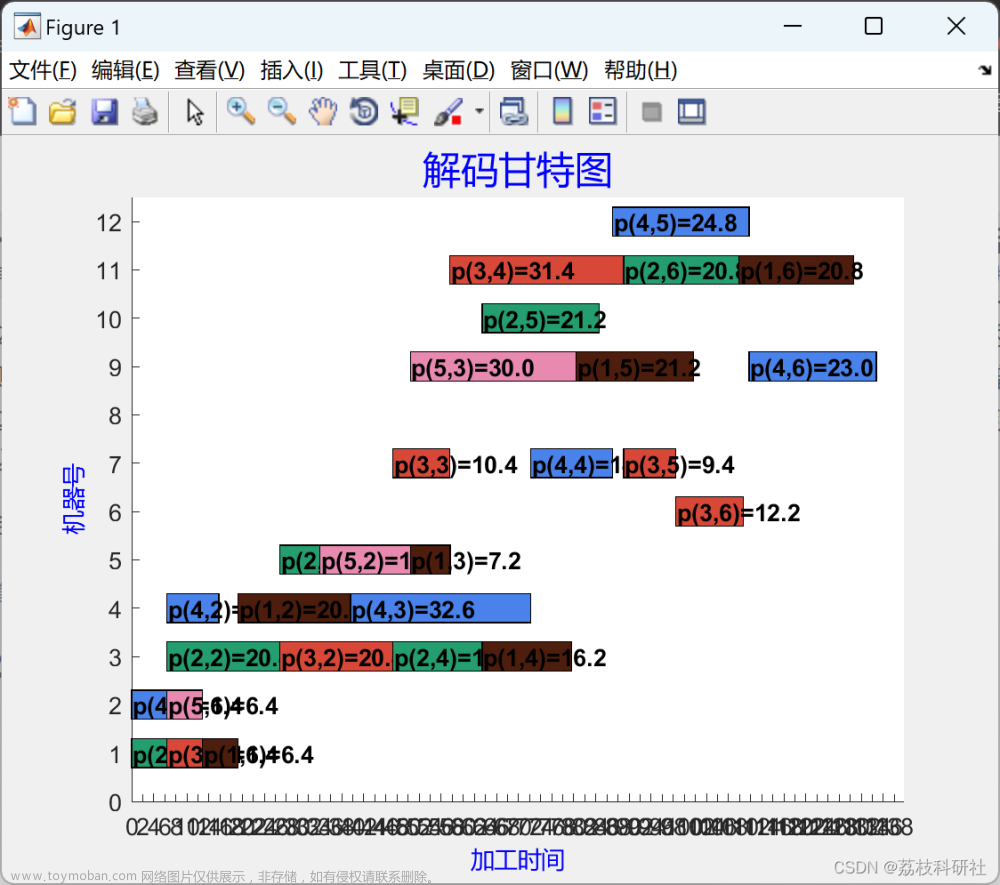输入:一个图的邻接矩阵G,n1,n2 (举例n1=16,n2=1)
输出:节点的分类id(第一类为0,第二类为1,0的个数为n1个, 1的个数为n2个)
目标:使得两类之间的边数最少
算法:遗传算法
目录
步骤1:初始化种群,种群个数,随机生成初始种群
步骤2:交叉算子
步骤3:突变算子
步骤4:计算适应度,进行种群的优化选择
步骤5:将代码组合起来
步骤6:画图
给出如下邻接矩阵
0 1 0 0 0 0 0 0 0 0 0 1 0 0
0 1 0 0 0 0 0 0 0 0 1 0 0 0
0 0 0 0 0 0 0 1 1 0 0 0 1 0
0 0 0 0 0 0 0 0 0 0 0 0 0 0
0 0 0 0 0 0 0 0 0 0 0 0 0 0
0 0 0 0 0 0 0 0 0 0 0 0 0 0
0 0 0 0 0 0 0 0 0 0 0 0 0 0
0 0 0 0 0 0 0 0 0 0 0 0 0 0
0 0 0 0 0 0 0 0 0 0 1 0 1 1
0 0 0 0 0 0 0 0 0 0 0 0 0 1
0 0 0 0 0 0 0 0 0 0 0 0 0 0
0 0 0 0 0 0 0 0 0 0 0 0 0 0
0 0 0 0 0 0 0 0 0 0 0 0 0 0
0 0 0 0 0 0 0 0 0 0 0 0 0 1
0 0 0 0 0 0 0 0 0 0 0 0 1 1
0 0 0 0 0 0 0 0 0 0 0 0 1 1
0 0 0 0 0 0 0 0 0 0 0 0 0 0
0 0 0 0 0 0 0 0 0 0 0 0 0 0
0 0 0 0 0 0 0 0 0 0 0 0 1 1
0 0 0 0 0 0 0 0 0 0 0 0 0 1
0 0 0 0 0 0 0 0 0 0 0 0 1 1
0 0 0 0 0 0 0 0 0 0 0 0 0 0
0 0 0 0 0 0 0 0 0 0 0 0 1 1
0 0 0 0 0 1 0 1 0 1 0 0 1 1
0 0 0 0 0 1 0 1 0 0 0 1 0 0
0 0 0 1 1 0 0 0 0 0 0 1 0 0
0 0 0 0 0 0 0 0 0 1 0 0 0 1
0 0 0 1 1 0 0 0 0 0 0 0 0 1
0 0 0 0 0 0 0 0 0 0 0 1 0 1
0 0 0 1 0 0 1 0 0 0 0 0 1 1
0 0 0 0 0 0 0 0 0 0 0 0 1 1
0 0 0 0 1 1 0 0 1 0 0 0 1 1
1 0 1 1 0 0 0 0 0 1 1 1 0 1
1 0 1 1 0 0 1 1 1 1 1 1 1 0步骤1:初始化种群,种群个数,随机生成初始种群
population = cell(1,100);
k=1;
%随机选取100个种群
for i = 1:100
a = randperm(34);
a(find(a <= n1)) = 1;
a(find(a > n1)) = 0;
population(i) = {a};
endrandperm():此 MATLAB 函数 返回行向量,其中包含从 1 到 n 没有重复元素的整数随机排列。找到1~16在数组a的位置,将此位置的数值置1,同理,17~34置0。
这样就得到了一个值全是0或1的数组,0和1各表示一个分类,将34个点分为两类。重复100次,形成一个元胞数组,即为100个将结点分为两类的种群。
更详细的一般编码步骤可以在其他文章搜到,但本题不涉及故不提及。
步骤2:交叉算子
%交叉
g = 1;
count = 1;
%总交叉次数小于500或得到40对交叉后存活的新个体
while g <= 500 && count <= 40
e = sort(randperm(34,2));
f = randperm(20,2);
ransetia = cell2mat(population(f(1)));
ransetib = cell2mat(population(f(2)));
%存活条件为交叉前后两组点的数量不变
if sum(ransetia(e(1):e(2))) == sum(ransetib(e(1):e(2)))
lingshi = ransetia(e(1):e(2));
ransetia(e(1):e(2)) = ransetib(e(1):e(2));
ransetib(e(1):e(2)) = lingshi;
population(19+2*count) = {ransetia};
population(20+2*count) = {ransetib};
count = count+1;
end
g = g+1;
end让我们先设定词义 种群=染色体
编码的交叉类比染色体交叉,交叉的编码段位置及长度由randperm随机出来,在此题中要满足分出的两类数量为16和18,故交叉出的染色体也要满足条件,ransetia、ransetib中1的数量仍然保持为16,不满足的则直接被淘汰,满足的加入种群。
总交叉次数500可以自己视情况设定,count达到40停止,意思是生成40*2=80个新种群,更新元胞数组21~100位置的种群,前20个是上一次迭代保留的优秀种群,下文会提到。
步骤3:突变算子
任选一个种群,选出两个结点,如果一个是0一个是1,将其突变为1和0,即在交换所属于不同类两个结点的位置。突变次数counter设置为80次,可以视情况改变。
%变异
counter = 1;
while counter <= 80
c = randperm(34,2);
r = cell2mat(population(randperm(100,1)));
if sum(r(c)) == 1
r(c) = r(c)*(-1)+1;
population(20+counter) = {r};
counter = counter+1;
end
end 步骤4:计算适应度,进行种群的优化选择
适应度的测度:1/(两类结点之间连接的边数+1) 分母加一是以防分成互相之间没有边连通的两类时导致分母变为0出错。
%适应度
fitness = [];
%计算适应度
for i = 1:100
x = cell2mat(population(i));
b = Adjacency_matrix-x ;
fitness(i) = 1/(length(find(b(find(x == 1),:)==1))+1);
end
[fitness,Index] = sort(fitness,"descend");
%将每次迭代的最大适应度保存,便于后续画图
maxfit(k) = fitness(1);
%保存该次迭代的总体适应度水平
general_fit(k) = mean(fitness);
%淘汰80个种群
population(Index(21:100)) = [];
精英数量直接设置成了最优的前20个,并没有根据优劣程度排序进行轮盘赌选择,也没有根据迭代次数设置精英个数的递增保留。(因为这题这样已经够用了,可以去设置一下,不难)
步骤5:将代码组合起来
function finalans=GA(Adjacency_matrix,n1,n2)
% Adjacency_matrix= w
% n1 = 16,n2 = 18
if (n1+n2)~=size(Adjacency_matrix,1) ||...
size(Adjacency_matrix,1)~=size(Adjacency_matrix,2)||...
n1<1 || n2<1
error('参数格式不合法')
end
population = cell(1,100);
k=1;
%随机选取100个种群
for i = 1:100
a = randperm(34);
a(find(a <= n1)) = 1;
a(find(a > n1)) = 0;
population(i) = {a};
end
while k <= 100
%交叉
g = 1;
count = 1;
%总交叉次数小于500或得到40对交叉后存活的新个体
while g <= 500 && count <= 40
e = sort(randperm(34,2));
f = randperm(20,2);
ransetia = cell2mat(population(f(1)));
ransetib = cell2mat(population(f(2)));
%存活条件为交叉前后两组点的数量不变
if sum(ransetia(e(1):e(2))) == sum(ransetib(e(1):e(2)))
lingshi = ransetia(e(1):e(2));
ransetia(e(1):e(2)) = ransetib(e(1):e(2));
ransetib(e(1):e(2)) = lingshi;
population(19+2*count) = {ransetia};
population(20+2*count) = {ransetib};
count = count+1;
end
g = g+1;
end
%变异
counter = 1;
while counter <= 80
c = randperm(34,2);
r = cell2mat(population(randperm(100,1)));
if sum(r(c)) == 1
r(c) = r(c)*(-1)+1;
population(20+counter) = {r};
counter = counter+1;
end
end
%适应度
fitness = [];
%计算适应度
for i = 1:100
x = cell2mat(population(i));
b = Adjacency_matrix-x ;
fitness(i) = 1/(length(find(b(find(x == 1),:)==1))+1);
end
[fitness,Index] = sort(fitness,"descend");
%将每次迭代的最大适应度保存
maxfit(k) = fitness(1);
%保存该次迭代的总体适应度水平
general_fit(k) = mean(fitness);
%淘汰80个种群
population(Index(21:100)) = [];
k = k+1;
end
步骤6:画图
画图风格因人而异,这里不贴代码直接贴出成品
 文章来源:https://www.toymoban.com/news/detail-674450.html
文章来源:https://www.toymoban.com/news/detail-674450.html
易知最小边数为10(分类结果不唯一)文章来源地址https://www.toymoban.com/news/detail-674450.html
到了这里,关于Matlab实现 遗传算法 无向图结点分成两类使得两类间边数最少 数学建模作业的文章就介绍完了。如果您还想了解更多内容,请在右上角搜索TOY模板网以前的文章或继续浏览下面的相关文章,希望大家以后多多支持TOY模板网!






](https://imgs.yssmx.com/Uploads/2024/04/857850-1.png)




